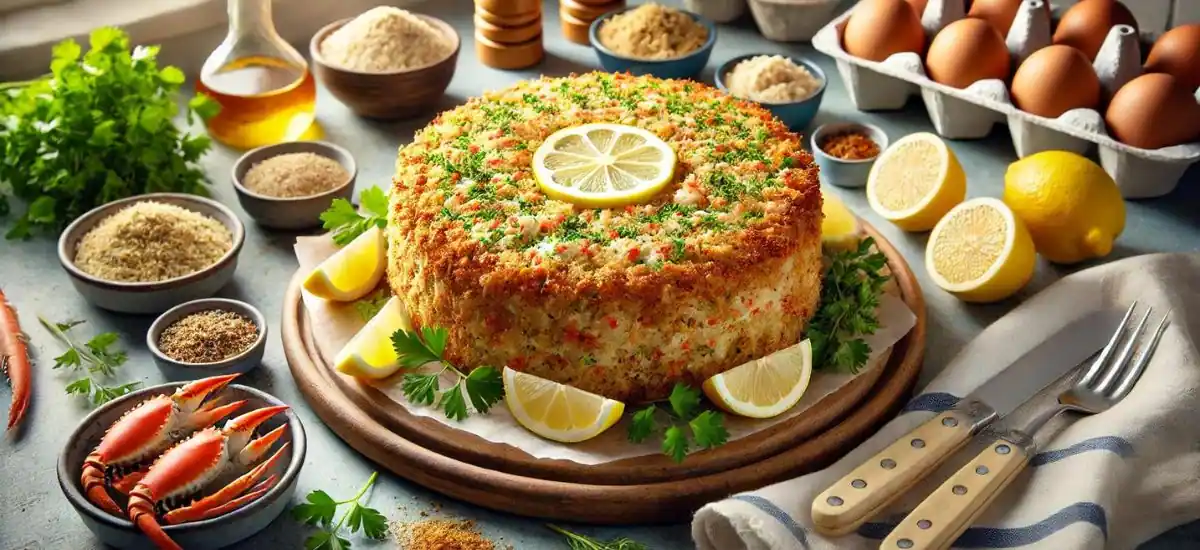Making delicious crab cakes involves selecting quality ingredients like lump crab meat and balancing them with the right amount of binders such as breadcrumbs and eggs. Gentle mixing is key to maintaining the luscious lumps of crab. Shaping the mixture into patties should be done with care to avoid compacting them too tightly. Cooking options include pan-frying for a crispy exterior, baking for a healthier version, or broiling for a quick, golden crust. Serving crab cakes fresh with lemon wedges or tartar sauce enhances their flavor. The secret to perfect crab cakes lies in the delicate balance of ingredients and careful cooking techniques.
Choosing the Right Ingredients
To get your crab cakes just right, picking the right ingredients is key:
- Crab Meat: Lump crab meat is your best bet for chunky, meaty cakes, but backfin or claw meat can also work if you’re on a budget.
- Binders: A mix of breadcrumbs, beaten eggs, and mayonnaise will help your crab cakes hold their shape without overpowering the delicate flavor of the crab.
- Seasonings and Add-ins: Old Bay seasoning is a classic, but don’t be shy about adding diced bell peppers, parsley, or a squeeze of lemon juice for an extra zing.
Essential Equipment for Making Crab Cakes
Before you start mixing, make sure you have the right tools on hand to make the job easier:
- Mixing Bowls: You’ll need a couple of sizes to handle the mixing without any spill-over.
- Baking Sheet or Frying Pan: Depending on whether you’re baking or frying, prepare your pan with a little oil or parchment paper to prevent sticking.
- Cookie Scoop or Spoon: This will help you shape uniform crab cakes that cook evenly.
Preparing the Crab Meat

Proper preparation of the crab meat is crucial to ensure your cakes are flavorful and free of any unpleasant surprises:
- Handling: Be gentle with the crab meat to keep those desirable lumps intact.
- Cleaning: Carefully check the crab meat for any shell fragments or cartilage—nothing ruins a good crab cake like chomping down on a piece of shell.
- Draining: Make sure to drain the crab meat thoroughly. Excess moisture can make your cakes mushy rather than crisp.
Mixing and Shaping the Crab Cakes
Now, let’s get down to the nitty-gritty of making the mixture and shaping those cakes:
- Mixing: Combine the crab meat with your binding ingredients and seasonings in a large bowl. Mix gently until just combined—you want to keep those lumps intact for the best texture.
- Shaping: Using a cookie scoop or your hands, shape the mixture into cakes about the size of a golf ball, then gently flatten them into patties. If the mixture is too loose, refrigerate it for 30 minutes to help it firm up before shaping.
Cooking Methods
You’ve got options when it comes to cooking your crab cakes, each giving a slightly different result:
- Pan-Frying: Heat a thin layer of oil in a skillet over medium heat. Fry the cakes for about 3-4 minutes on each side, or until golden brown and crispy. This method gives you that irresistible crust with a tender interior.
- Baking: For a lighter option, arrange the cakes on a greased baking sheet and bake at 375°F for about 12-15 minutes, flipping halfway through. Baking offers a healthier alternative while still achieving a nice, golden finish.
- Broiling: Place the crab cakes on a baking sheet and broil them a few inches from the heat source. Watch them closely—they’ll cook quickly and get a beautifully crisp top in just a few minutes.
Serving and Presentation

Serve your crab cakes hot and fresh for the best taste and texture:
- Garnishes: A wedge of lemon, a sprinkle of chopped parsley, or a dollop of tartar sauce can add the perfect finishing touch.
- Presentation: Serve on a bed of mixed greens or alongside a light coleslaw for a refreshing contrast to the rich, savory flavor of the crab cakes.
Common Mistakes to Avoid
Keep these tips in mind to avoid common pitfalls:
- Overmixing: This can break down those precious lumps of crab meat, leading to dense, heavy cakes.
- Overloading with Fillers: Too much breadcrumb or too many add-ins can drown out the flavor of the crab. Keep it simple to let the crab shine.
Advanced Tips for Perfect Crab Cakes
For those looking to elevate their crab cake game:
- Resting the Mixture: Let your crab cake mixture rest in the refrigerator for an hour before shaping. This helps the flavors meld and makes the cakes easier to shape.
- Adjust Seasonings: Taste your mixture before shaping and adjust the seasoning if necessary. Remember, it’s easier to add more seasoning than to take it away!
Frequently Asked Questions
Q1. What is the best type of crab meat for crab cakes?
Ans: Lump crab meat is generally preferred for its flavor and texture.
Q2. How can I ensure my crab cakes don’t fall apart while cooking?
Ans: Make sure your binding mixture is well-proportioned, and don’t flip the cakes too soon in the cooking process.
Q3. Can crab cakes be made ahead of time?
Ans: Yes, you can shape the crab cakes and refrigerate them overnight before cooking, which can help them hold together better.
Conclusion
Crab cakes are a versatile and delicious seafood dish that can be enjoyed in many ways. With the right techniques and a little practice, you can make restaurant-quality crab cakes right at home.


